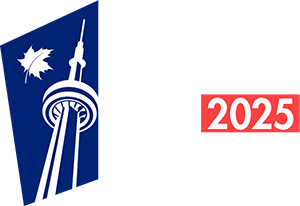Farms Fact Sheet
What you need to know: The basics
- The Municipal Property Assessment Corporation (MPAC) values and classifies over 222,000 farms in Ontario.
- For a farm to be classified as farm, a property owner must apply for the Farm Property Tax Class Rate Program with Agricorp.
- Properties in the Farm Property Class Tax Rate Program will be taxed no more than 25 per cent of the municipality’s residential tax rate.
- Farms include a large variety of working farms, farmland, farm outbuildings, specialized farms and often have a residence located on the farm which is occupied by the owner or farmer.
- Lands and buildings used solely for farming purposes are assessed as farmland.
- Any remaining land or buildings are assessed according to their use.
How we assess farms
When assessing a farm property, we compare it to similar farm properties that have sold in the area. We also consider a number of other factors, such as the quality and use of the land, and the age, quality and use of the buildings and structures.
Farmland
- We undertake an extensive look at sales, land capability and geographic areas when determining farmland values.
- MPAC conducts an ongoing study and analysis of the market including sales transactions. We analyse up to eight years of sales of farmland to farmers who intend to use the property for farming purposes.
- Sales of farmland used for other purposes other than farming are not included.
- Sales of farmland to people who are not farmers are not included.
- Sales with special factors, that do not reflect the market value, are not included (e.g. family-to-family sales).
- Farmland is valued according to how productive it can be and it’s placed into one of six quality classes with Class 1 having the highest agricultural capability and therefore the most valuable.
- Geographic areas are established according to the suitability and similar farmland markets.
Residence and Land
Residence (on the farm)
- We consider how much it would cost to rebuild the farmhouse and take into consideration the location, size, age and quality of construction.
Land (the land upon which the residence is built)
- If the house is occupied by the farmer, typically one acre of land surrounding the residence is valued as farmland and classified as residential.
- If the house is occupied by a non-farmer, any land that is used by the occupant is valued and classified as residential.
Farm Outbuildings (buildings used for farming)
- We establish the current cost of replacing farm outbuildings and take into consideration the design, age, size and quality of construction. A deduction is applied for depreciation to account for age and function.
Other Buildings
- We value other buildings, such as wineries and stores, according to the cost of replacing them, taking into consideration the building’s design, age, size and quality of construction. They are valued and classified according to use (e.g., commercial, industrial or residential).
Classification
In addition to valuing farms, we also classify every farm in Ontario. The classification of a property is important because it determines the tax rate used to calculate property taxes. There may be different tax classes for farms depending on the use.
Residential Property Tax Class
- By default, farm properties used for farming are classified as residential until they are placed in the Farm Property Class Tax Rate Program as determined by Agricorp.
Farm Property Tax Class
- Farm properties that meet the eligibility requirements for the Farm Property Class Tax Rate Program will have farmland and associated outbuildings placed in the farm property class which will be taxed up to 25% of the municipal residential tax rate.
- Property owners must apply for the Farm Property Class Tax Rate Program with Agricorp.
Farm Forestry Exemption
In an effort to protect wooded areas, farmers with farm property or farm property holdings that have wooded areas, may qualify for the Farm Forestry Exemption (FFE). If they qualify, the tax exemption applies to one acre of forested land for every ten acres of farmland. It cannot exceed 30 acres in any one municipality.
- Properties will not be eligible for the FFE if they’re currently enrolled in the Managed Forest Tax Incentive Program (MFTIP) or the Conservation Land Tax Incentive Program (CLTIP).
- We will automatically apply the tax exemption if your property qualifies.
Small-Scale On-Farm Business Subclasses
- Farms with a commercial and/or industrial facility on the property may be eligible for the small-scale on-farm business subclasses if it is an extension of the farming operation. The commercial and industrial subclasses provide a tax rate that is 75% lower than the industrial or commercial tax rates.
- To qualify, 51% of the facility must be used to sell, process or manufacture a product produced on the farmland. If the commercial and/or industrial operation has an assessed value equal to or greater than $1 million, it is not eligible for the small-scale on-farm business subclasses. Learn more about this initiative here.
Other Classifications
- If a portion(s) of a farm is used for purposes other than farming (e.g. auto repair garage), that portion is classified according to its current use. This is to ensure the appropriate tax class is applied to the various uses of the property.
Assessing other lands (e.g. untillable, marginal land, wetlands, streams, etc.)
Cash crop farming
- If the property is owned by a farmer, these lands are assessed as farmland and classified as farmland as qualified by Agricorp.
- If the property is not owned by a farmer, and a portion of the land is farmed by a farmer, it is assessed as farmland. These lands are valued and classified as residential as it is not used for farming.
- We can only assess lands and buildings according their current use.
- MPAC’s assessors consider land characteristics when assessing the value of theses lands and apply adjustments where necessary.
Livestock Pasturing
- These lands are assessed as farmland.
About MPAC
The Municipal Property Assessment Corporation (MPAC) is an independent, not-for-profit corporation funded by all Ontario municipalities and is accountable to the Province, municipalities and property owners. Our role is to value and classify all properties in Ontario in compliance with the Assessment Act and regulations set by the Government of Ontario.
- We are the largest assessment jurisdiction in North America, assessing more than 5.6 million properties in Ontario, representing more than $3.1 trillion in property value.
- Our assessments provide the foundation municipalities use to calculate the property taxes needed to pay for community services.
- Our assessors are trained experts in the field of valuation and apply appraisal industry standards and best practices.
- Our assessments and data have met international standards of accuracy and are relied upon by banks, insurance companies and the real estate industry.




